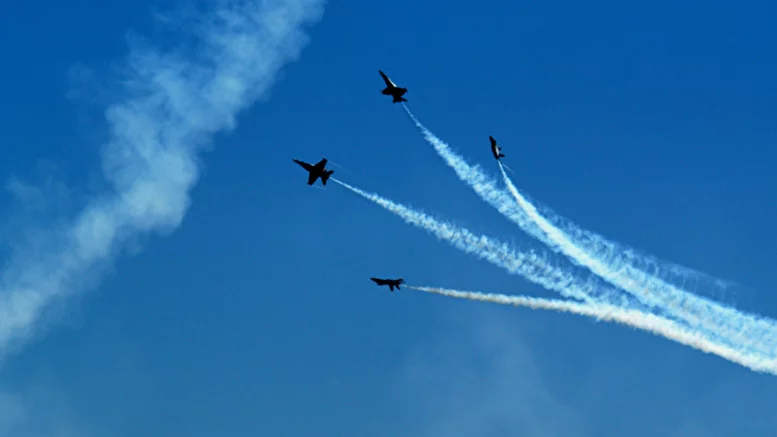Supersonic aircraft have captivated the imagination of aviation enthusiasts for decades. These cutting-edge machines push the boundaries of speed and engineering, enabling travel at velocities faster than the speed of sound. In this blog post, we will explore what define a supersonic aircraft, how fast they can travel, and the principles that underpin supersonic flight.
Understanding Supersonic Speed
Supersonic speed refers to velocities exceeding the speed of sound, which is approximately 1,225 kilometers per hour (761 miles per hour) at sea level under standard atmospheric conditions. When an aircraft reaches or exceeds this speed, it enters the realm of supersonic flight, where a unique set of aerodynamic phenomena come into play.
What Defines a Supersonic Aircraft?
A supersonic aircraft is characterized by its ability to travel faster than the speed of sound. However, there are specific design features and capabilities that distinguish these aircraft from their subsonic counterparts. Key defining factors include:
- Aerodynamic Design: Supersonic aircraft often possess sleek and streamlined shapes to minimize drag and enhance stability at high speeds. Features such as delta wings, swept-back wings, and sharp nose cones are commonly seen in supersonic aircraft designs.
- Engine Power: Supersonic flight requires substantial engine power to overcome aerodynamic drag and generate the necessary thrust. Supersonic aircraft typically employ high-performance jet engines capable of producing significant thrust at supersonic speeds.
How Fast is a Supersonic Plane?
The speed of a supersonic aircraft can vary depending on its design and purpose. While the term “supersonic” broadly encompasses speeds faster than the speed of sound, there are different classifications within this category.
- Transonic Speed: Transonic speeds refer to velocities close to the speed of sound. These aircraft operate near the sound barrier and typically reach speeds ranging from Mach 0.8 to Mach 1.2.
- Supercruise: Some supersonic aircraft have the capability of “super-cruising,” which means they can sustain supersonic speeds without relying on afterburners. These aircraft can maintain speeds of Mach 1.2 or higher for extended periods.
- Supersonic Cruise: Supersonic cruise refers to sustained supersonic flight. Supersonic passenger aircraft, such as the Concorde, were capable of cruising at speeds exceeding Mach 2, roughly twice the speed of sound.
The Mechanics of Supersonic Flight
Supersonic flight involves overcoming various aerodynamic challenges associated with the formation of shock waves and increased drag at high speeds. Understanding the mechanics of supersonic flight provides insight into the complexities of designing and operating supersonic aircraft.
- Shock Waves: As an aircraft approaches and exceeds the speed of sound, shock waves form due to the compression of air molecules. These shock waves create a characteristic “sonic boom” and generate significant drag on the aircraft.
- Wave Drag Reduction: To minimize drag and enhance efficiency, supersonic aircraft employ techniques such as wave drag reduction. This involves careful shaping of the aircraft’s surfaces and employing advanced materials to mitigate the impact of shock waves.
Supersonic Aircraft Technology and Advancements
Advancements in technology continue to shape the development of supersonic aircraft. Innovative engineering solutions are aimed at reducing noise levels, increasing fuel efficiency, and expanding the practical applications of supersonic flight.
Aerodynamics and Materials
Advances in aerodynamic design and the use of lightweight, high-strength materials contribute to improved performance and efficiency. Composite materials and innovative wing designs help reduce drag and enhance maneuverability.
Sonic Boom Mitigation:
One of the challenges of supersonic flight is mitigating the disruptive sonic boom. Ongoing research focuses on developing aircraft designs and technologies that minimize the impact of sonic booms, opening up the possibility of supersonic travel over land.
Supersonic Aircraft Applications
Supersonic aircraft have diverse applications across various sectors. While supersonic passenger travel is perhaps the most well-known, there are other areas where these high-speed machines play a crucial role.
- Commercial Aviation: Supersonic passenger travel offers the potential for significantly reduced flight times, enabling faster global connectivity. Several companies are currently developing supersonic aircraft with advanced technologies and improved efficiency.
- Military and Defense: Supersonic aircraft play a vital role in military operations, providing rapid response capabilities and enhanced maneuverability. Fighter jets and reconnaissance aircraft often operate at supersonic speeds to carry out missions effectively.
Challenges and Considerations
The development and operation of supersonic aircraft come with their fair share of challenges and considerations that need to be addressed:
- Noise Pollution: Sonic booms and engine noise pose challenges in making supersonic flight viable over populated areas. Overcoming these noise-related concerns is crucial for the future acceptance and adoption of supersonic aircraft.
- Environmental Impact: Supersonic flight has environmental implications, particularly in terms of fuel consumption and emissions. Efforts are being made to develop more fuel-efficient engines and explore alternative energy sources for supersonic aircraft.
Conclusion: Pushing the Boundaries of Speed
Supersonic aircraft represent a pinnacle of engineering and speed, pushing the boundaries of what is possible in aviation. Defined by their ability to exceed the speed of sound, supersonic aircraft incorporate aerodynamic design, advanced technologies, and specialized engines to achieve incredible velocities. While challenges remain, ongoing advancements in materials, aerodynamics, and noise reduction are paving the way for a new era of supersonic travel.
Whether it’s reducing travel times or enabling rapid military operations, the allure of supersonic flight continues to captivate researchers, engineers, and aviation enthusiasts alike. As technology progresses, the dream of faster-than-sound travel may soon become a reality once again. For more information, contact us today!
Ready to Soar with Us?

